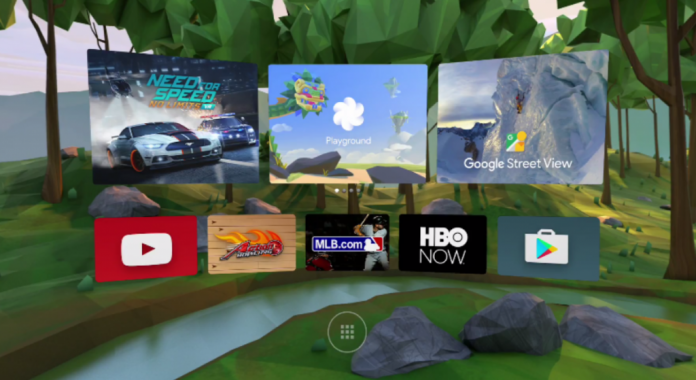Google is heavily pushing virtual reality (VR) at its I/O conference this week, mainly centred around the Daydream head-mounted display (HMD) and controller. In her talk today Lindsay Metcalf, a Lead Designer at Google, discussed two major topics. One being Daydream Labs, an experimental program exploring VR experiences – what does and doesn’t work – as well as Daydream Home.
Daydream Home is the HMDs app hub. This is where users will access all that Google Daydream has to offer, with interesting touches for consumers as well as useful options for developers. As Metcalf explains: “So for Daydream home we really wanted to create a welcoming space that had a bit of wonder and delight inside of it, and was somewhere you would want to stop and hang out for a bit before you embark on your next experience.”
The first thing you’ll notice is that Daydream Home is split into several windows, three main ones on the top and five below them. While the five lower windows seem to be current apps used the three bigger screens are called Discovery Windows. What’s different about these is when they’re viewed, they begin to move and animate, giving a greater sense of depth. For developers, they’ll be able to add Android Deep Links to them with intent filters. “If you add a new episode or level to the game it means you can promote it or them and you don’t need to actually have a new app as users already have it downloaded on their phone,” said Metcalf.
One indispensable feature is the Playstore, connecting user to all of the apps available. Linked to this is the Daydream mobile app, which will allow users to discover and cue up content to watch in the headset later, so you’ll be able to download videogames for example and they’ll appear in Daydream Home to play.
VRFocus will continue its coverage of Google Daydream, reporting back with the latest details.















